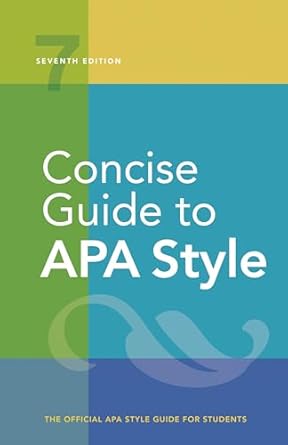[toc]
apa style punctuation guide colons dashes hyphens
Concise Guide to APA Style: 7th Edition (OFFICIAL)
Page 110 Review
Understanding Punctuation: A Deep Dive into APA Style
This ebook excerpt provides a concise overview of specific punctuation rules within the American Psychological Association (APA) style.
It covers colons, dashes (em and en dashes), and hyphens, offering practical guidance on their appropriate usage.
Let’s dissect the key takeaways:
Colons in APA Style
The excerpt clarifies the function of colons in introducing lists and elaborating on preceding clauses. “The proportion of salt to water was 1:8.” This example demonstrates a simple, clear usage.
However, the text emphasizes a crucial exception: “Do not use a colon in the following case: after an introduction that is not an independent clause or complete sentence.” This nuance highlights the importance of grammatical structure when using colons.
Examples are provided to illustrate correct usage. “The formula is r, = a; + e.” shows how a colon can introduce an explanation. “Target behaviors included eating, sleeping, and socializing.” reinforces this point.
Furthermore, it addresses multi-line lists: “The participants were asked to rank the 15 items, explain their choices, and close their notebooks when finished.” The consistent formatting and use of bullet points create a readable and organized list.
Mastering Dashes: Em Dash vs.
En Dash
The section on dashes distinguishes between the em dash and the en dash, a common point of confusion. “Two dash forms are used in APA Style: the em dash (long dash) and the en dash (midsized dash).
These dashes are different from hyphens (see Section 5.2) and minus signs (see Section 6.11).” This immediately sets the stage for a clear distinction.
The excerpt advises against overuse of the em dash: “Overuse of the em dash weakens the flow of material, so use it carefully.
Do not insert a space before or after an em dash.
Word-processing programs can be set to automatically convert two back-to-back hyphens to an em dash.” This warning is valuable for maintaining writing clarity and avoiding stylistic pitfalls.
An example illustrates the proper use of the em dash: “Social adjustment—but not academic adjustment—was associated with extraversion.” This shows how the em dash can set off a clarifying or contrasting element.
The en dash is explained as being used “between words of equal weight in a compound adjective and to indicate a numerical range, such as a page or date range.
Do not insert a space before or after an en dash.” Examples like “author—date citation,” “Sydney-Los Angeles flight,” “pp. 4-7,” and “50%-60%” provide concrete applications of this rule.
Hyphens, En Dashes, and Abbreviations
The final point clarifies the use of hyphens within abbreviations: “A hyphen rather than an en dash is generally used in an abbreviation that contains dashes, such as the abbreviation for a test or scale (e.¢., MMPI-2) or a diagnostic manual (DSM-5, ICD-11; see Section 5.13).” This is a specific rule that may be easily overlooked, making its inclusion particularly helpful.
Understanding when *not* to use an en dash is as important as knowing when to use one.
Conclusion
In summary, this excerpt provides a valuable guide to punctuation within APA style.
By understanding the proper use of colons, em dashes, en dashes, and hyphens, writers can improve the clarity, precision, and professionalism of their work.
The examples and clear explanations make this a useful resource for anyone working with APA guidelines.
Buy full ebook for only $18: https://www.lulu.com/shop/american-psychological-association/concise-guide-to-apa-style-7th-edition-official/ebook/product-rmzpq54.html?page=1&pageSize=4
Apa Style Punctuation Guide Colons Dashes Hyphens
Read more: Pharmaceutical Abbreviations & Concentrations Explained


Leave a Reply